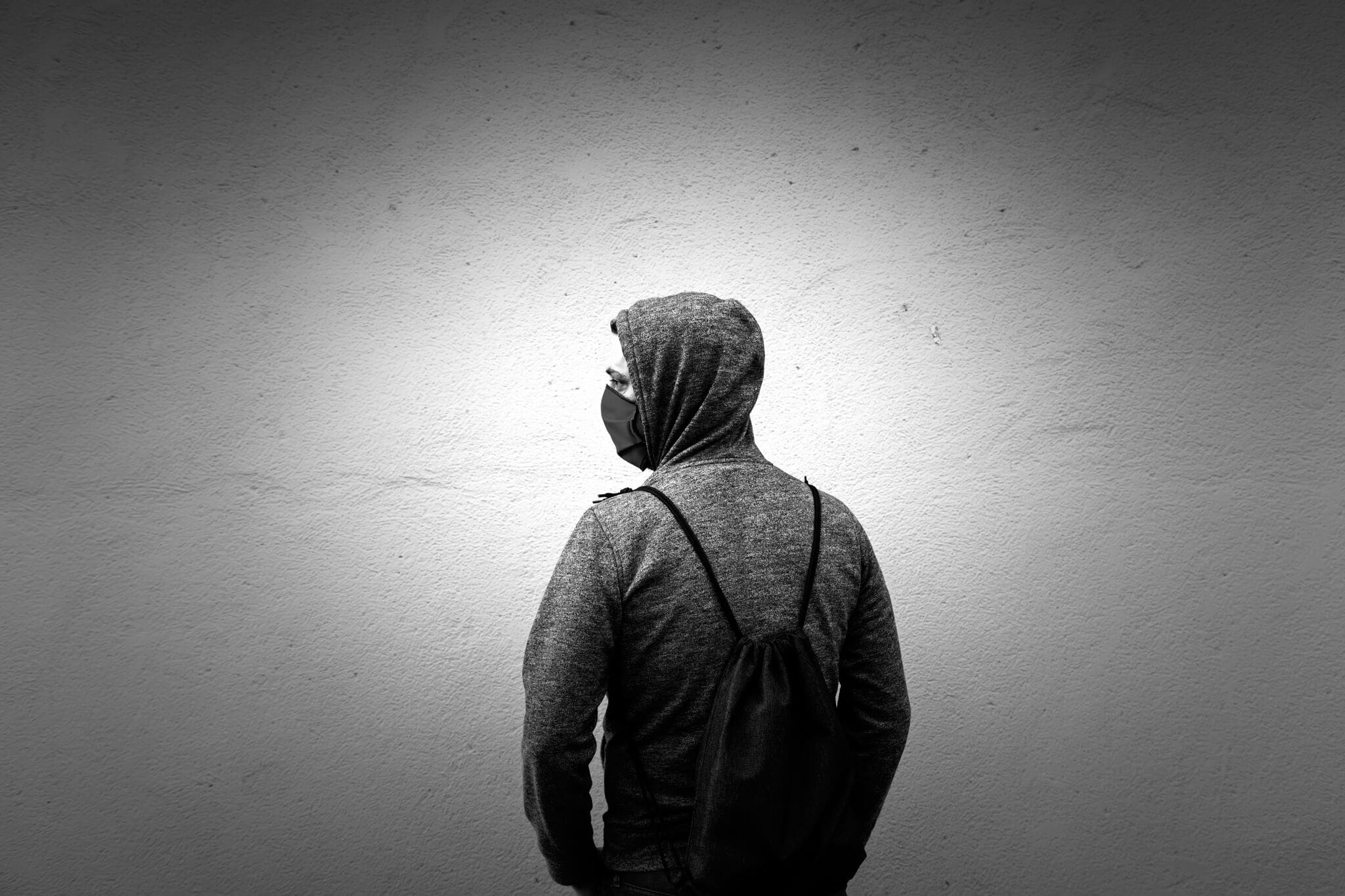In this article
In the UK, we are proud of our diverse community, where people come from many different backgrounds and don’t share all of the same experiences. We work hard to create an environment where people are treated fairly and equitably. However, in creating laws and policies to promote equality, and to address disadvantage and discrimination, protected characteristics tend to be considered in isolation, rather than acknowledging that a person may be, and often is multi-faceted in terms of social identity and that their multiple social identities can intersect. Intersectionality therefore challenges systems that treat types of disadvantage and discrimination in isolation.
The term intersectionality may not yet be in everyday usage however, it is a concept that is now widely used in social justice activism, law, sociology, and other fields. The term was first coined in 1989 by Kimberlé Crenshaw, an Isidor and Seville Sulzbacher Professor of Law at Columbia Law School, Professor of Law at the University of California, Los Angeles and a civil rights activist.
Crenshaw’s ground breaking work on intersectionality was influential in the drafting of the equality clause in the South African Constitution. She is now one of the most influential black feminist legal theorists in the US.
In this article we will examine what is meant by the term intersectionality and how equality, disadvantage and discrimination are impacted by intersectionality.

Intersectionality explained
The roots of Intersectionality are in Black feminism and the lived experience of Black Women’s oppression. An example of this was in a legal case in 1976, Emma DeGraffenreid and four other Black female auto workers accused their employer, General Motors of using a seniority-based system of redundancies that discriminated against Black Women. General Motors did not hire Black Women before 1964. This meant that when seniority-based layoffs were applied during an early 1970s recession, all the Black Women hired after 1964 were subsequently laid off.
The courts weighed the allegations of race and gender discrimination separately. They decided that because the company employed African American male factory workers, this proved that General Motors was not discriminating on race. It also said that the employment of white female office workers disproved gender discrimination. The court declined to consider compound discrimination and dismissed the case. Kimberlé Crenshaw argued that in cases such as this, the courts have tended to ignore Black Women’s unique experiences by treating them as only women or only Black.
Kimberlé Crenshaw used the term intersectionality to describe how race, class, gender, and other individual characteristics “intersect” with one another and overlap. All people hold multiple social identities simultaneously, and these identities intersect to influence how individuals are treated and perceive the world. It is a recognition that people are shaped by their simultaneous membership of multiple interconnected social categories. In short, intersectionality considers people’s overlapping identities and experiences.
Kimberlé Crenshaw provided the following definition of intersectionality “Intersectionality is a metaphor for understanding the ways that multiple forms of inequality or disadvantage sometimes compound themselves and create obstacles that often are not understood among conventional ways of thinking.”
Intersectionality is now being used in law and policy to ensure that anti-discrimination efforts protect people in complex ways, considering how different aspects of identity combine. It is primarily a tool for understanding invisible power relations and how they shape inequality, not identity. Intersectionality looks at interlocking systems of oppression and how these play out in individual’s lives. For example, a Black Woman without a disability will have a different experience of society than a White Woman without a disability, or a Black Woman with a disability. Intersectionality highlights how people who belong to more than one marginalised group may face overlapping forms of discrimination.
An intersectional approach to policy making, one where multiple social categories overlap and intersect with each other, allows social policy to become more inclusive and just.
What is intersecting?
Intersecting is the concept that an individual’s identity consists of multiple, intersecting factors, including, but not limited, to gender identity, gender expression, race, ethnicity, class (past and present), religious beliefs, sexual identity and sexual expression. These intersecting factors are what make us multi-layered individuals, as one aspect of our identities influences the other aspects of our identities to paint the full picture of who we are.
Cases of discrimination are often due to certain factors coming together, or intersecting, including the more obvious element. For example, a Muslim woman wearing the Hijab has intersecting characteristics for potential discrimination or disadvantage, Gender, Religious Beliefs, and Race. She may have similar experiences with other women; however it is the specific intersecting of all these characteristics that makes her identity and situation distinctive, and extremely challenging with complex barriers and diverse realities. The difficulties and discrimination that she may face as both a woman and as person who is Muslim, is intersecting because she is a Muslim Woman and these complex barriers needs to be taken into consideration.
Intersecting disadvantage and discrimination can occur when two or multiple grounds for disadvantage and discrimination operate simultaneously and interact in an inseparable manner, producing distinct and specific forms of disadvantage and / or discrimination.
Intersectional feminism
Traditionally, feminism has focused on the issues experienced by women in general, however there is no such thing as an “average woman”. Feminism has been a term that is used to describe a type of feminism that overshadows the struggles that the diversity of women, particularly those with characteristics such as Race, Gender Identity, Age, Disability and Socio-economic Status face. Some women and girls face multiple forms of disadvantage, discrimination and even violence due to other added marginalised identities, therefore disadvantage and discrimination cannot be addressed through one-size-fits-all solutions.
Intersectional feminism takes into account the many different ways each woman experiences disadvantage and / or discrimination. In 1995, the World Conference for Women, held in Beijing, drew attention to the fact that age, disability, social and economic status, ethnicity and race can create particular barriers for women. This led to the development of a framework for recognising multiple and coexisting forms of discrimination, which became part of the Beijing Platform for Action.
Intersectional feminism centres the voices of those experiencing overlapping, concurrent forms of disadvantage and / or discrimination in order to understand the depths of the inequalities and the relationships among them in any given context. Speaking on the topic of Intersectional feminism in an interview with Time Magazine, Kimberlé Crenshaw stated that “All inequality is not created equal. An intersectional approach shows the way that people’s social identities can overlap, creating compounding experiences of discrimination. We tend to talk about race inequality as separate from inequality based on gender, class, sexuality or immigrant status. What’s often missing is how some people are subject to all of these, and the experience is not just the sum of its parts”

Protected characteristics
UK discrimination law has historically taken an approach to discrimination that allows only for a single characteristic to be considered, and has treated identity characteristics as discrete, homogenous groups.
The Race Relations Act 1965 was the first piece of legislation in the UK to address the prohibition of racial discrimination. The Act banned racial discrimination in public places and made the promotion of hatred on the grounds of colour, race, or ethnic or national origins an offence. It was criticised for failing to address vital areas where discrimination was most prevalent, namely employment and wider aspects of acquiring accommodation. This led to the passing of the Race Relations Act 1968, which made unlawful acts of discrimination within employment, housing and advertising. The Race Relations Act 1976 made fresh provision with respect to discrimination on racial grounds and relations between people of different racial groups.
The Equal Pay Act 1970 was a UK law that prohibited unequal pay for men and women doing the same or similar work. It was the first UK law to give women the right to equal pay.
The Sex Discrimination Act 1975 made sex discrimination illegal in the areas of employment, education and the provision of goods, facilities and services.
The Disability Discrimination Act 1995 was the first UK legislation protecting disabled people against various forms of discrimination, it made it illegal to discriminate against people with disabilities in the UK.
The Equality Act 2010 came into force on 1 October 2010, bringing together over 116 separate pieces of legislation into one single Act including those highlighted above, and also:
- The Employment Equality (Religion or Belief) Regulations 2003
- The Employment Equality (Sexual Orientation) Regulations 2003
- The Employment Equality (Age) Regulations 2006
- The Equality Act 2006, Part 2
- The Equality Act (Sexual Orientation) Regulations 2007
The aim of the Equality Act is that of simplifying legislation and harmonising protection for all of the characteristics covered in the Act, these protected characterises are:
- Age
- Disability
- Gender reassignment
- Marriage and civil partnership
- Pregnancy and maternity
- Race
- Religion or belief
- Sex
- Sexual orientation
However, the Equality Act 2010’s approach to discrimination continues to treat identity characteristics as discrete, homogenous groups. Although, Section 14 of the Equality Act 2010 does contain a provision to cover direct discrimination on up to two combined grounds; this is known as combined or dual discrimination. However, this section has never been brought into effect as the government deemed it too ‘complicated and burdensome’ for businesses.
There are now calls on the Government to enact section 14 so that individuals can bring forward cases on multiple grounds / intersectionality of discrimination. However, Section 14 would require amendment as its scope remains limited to two grounds of direct discrimination and does not take into other forms of discrimination such as indirect discrimination or harassment.
Some Judges in discrimination cases are starting to take a more a broader approach when considering claims where several characteristics are at play, for example a woman bringing a case of unfair dismissal not only because of gender discrimination, but also because of the additional facets of age and race discrimination that were in play when she was dismissed. However, currently she would need to bring 3 separate claims of discrimination, one each for Gender, Age and Race.
It is all too easy to consider protected characteristics in neat boxes however, this treating each group as distinct and homogenous fails to take into consideration the very different experiences that those who share a protected characteristic may have. A more holistic approach such as the consideration of intersectionality needs to be applied when considering disadvantage and discrimination. Comparison within groups, as well as between groups, is an important aspect to achieving equality, inclusivity and fairness.
Discrimination due to intersectionality
Intersectional discrimination is when someone experiences discrimination based on more than one protected characteristic. Discrimination due to intersectionality can occur for any number of reasons and in any number of contexts. For example, Afro-textured hair discrimination still remains a widespread issue for Black Women in the workplace, with Black Women’s natural hair being two-and-a-half times more likely to be perceived as unprofessional. The same criteria is not applied to the hair types of other Races, neither is it universally applied to Black Male’s hair. Therefore Black Women face Intersectional discrimination because of their Race and their Gender.
Here are some examples of legal cases that have involved Intersectional discrimination:
O’Reilly v BBC – Miriam O’Reilly was a BBC Countryfile presenter, when she was removed from the programme she made a claim for combined age and sex discrimination against the BBC. Miriam was aged 51 when she, along with three other female presenters who were in their forties, was informed that she would no longer be presenting on the programme when it moved from a daytime slot to a primetime evening slot.
The new presenters, apart from the main presenter John Craven (a 68-year-old man), were in their 30’s. The BBC pointed to the fact that although the Equality Act 2010 included a specific provision “combined” or “dual” discrimination on the basis of two protected characteristics (section 14) it was not implemented. Since that measure was not yet in force, the BBC argued that combined discrimination could not be unlawful under current anti-discrimination legislation.
The Employment Tribunal found that this reasoning was flawed, stating that “a woman’s sex or age need not be the “sole or principal reason” for the detrimental treatment in question. It was possible to claim discrimination on both grounds under existing law if they significantly influenced the reason for the treatment.”
Lynskey v Direct Line – Mrs M Lynskey had worked as a telesales consultant for Direct Line Insurance since April 2016. She resigned on 3 May 2022 due to experiencing symptoms of menopause, and Direct Line’s mishandling of Ms Lynskey’s symptoms. She brought constructive unfair dismissal and Equality Act complaints on the basis of Gender, Age and Disability. Like previous women, she had tried to bring separate claims for sex discrimination and age discrimination.
These claims failed as her employer could show that they had treated others in the same age bracket or a man with a health condition in the same way as they treated Ms Lynskey. Her claim of failure to make reasonable adjustments (Disability discrimination) succeeded. However, the adverse treatment is not solely because of gender, or age, it is the relationship between the two characteristics when combined that gives rise to circumstances that arguably require protection without the need to satisfy the legal test of ‘disability’.
It can be argued that in all of the cases highlighted above that the discrimination that occurred is a particular type of multiple discrimination or Intersectionality, where a person’s multiple identities intersect in a way that cannot be separated out. The fact that UK law does not currently allow for such Intersectionality cases means that there is little information about the number of people that are prevented from bringing claims as a result of this limitation.

Final Thoughts
Intersectionality is a complex but important concept that acknowledges that every individual’s identity comprises different aspects that intersect to shape their experiences in life and how they are treated by society. People who belong to more than one marginalised group may face overlapping forms of discrimination and this should be identified and taken into consideration when policy and law making to ensure social justice for all.
Although Intersectionality is widely discussed in academic and activist circles, there is a need to bring it into the mainstream and raise awareness amongst the wider population to be able to fully address disadvantage and inequality.






